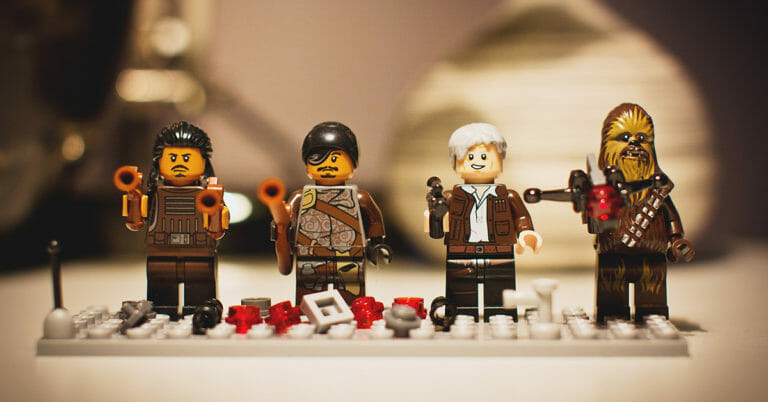By Shaun Leonard · March 29, 2018

Whether it’s a scene, a joke, an action, or a visual – if it’s in your script it should earn its place. The same goes for characters. And not just the heroes and villains, I’m talking about the side characters who are only in a couple scenes. The henchmen, the partygoers, the spectators, the waiters. No matter how many lines they get in your script, remember they can do more than just fill time or connect dots. They’re another chance to add something to your script. You should take every chance you get.
Every character, big or small, should want something or have something that makes them unique or specific, and not just “exist” as a plot device or to advance the story. It’s also important to remember that characters shouldn’t just exist to further the main character’s journey. This is how we get lifeless, pointless, waste of page space non-characters. In addition to wasting valuable page real estate on these human props, consider all the good stuff you could be missing out on by not trying. For example, instead of having a nameless henchman attack the protagonist, consider giving that character an issue of their own they’re trying to work out. Perhaps they want a promotion, or they’re getting older and want to prove they can still compete with the next generation. Let’s look at four quick and easy ways to make the most of your side characters.
At this point, it will seem like the tips for making the most of a side character are the same as the tips for making the most of any character. It seems that way because it’s true! Regardless of the perceived “importance” of a side character in terms of the plot, chances are their lives matter to them. So the cop hassling the protagonist might be having a rough day, and the last thing they need is a suspect who has more important things to do. And if the side character’s goal is just to do their job, why do they care so much? If it’s money, show that. If they love their job, show that. If they’re hungover but stubbornly trying to barrel through the day, well, you know what to do.
It’s show business, not tell business (or however the saying goes). Whatever you write, whether it’s the turning point that drives the plot into the second act or the climactic fight that decides the fate of the heroes, it should take advantage of film as a visual medium. Visual elements can add layers without sacrificing page space, so consider them carefully when introducing even the smallest character. Specific images can tell us everything we need to know about a character. Think of the classic Bond henchmen Jaws and Oddjob. Their look informs their fighting style, and we know they’re trouble without them ever saying a word. A puppy in a purse can tell us a lot about someone in a drama, and the same goes for a baby on a leash in a comedy.
And it doesn’t have to be a visual related to the character’s physical form or personal aesthetic. A side character can be made distinct by the particular way they do something. Whether it’s their peculiar method of making coffee or their distinctive gait, visuals rev up the imagination of the audience. We instinctively look for clues when characters appear onscreen. So give them to us.
Nobody is just one thing. Even dictators have asthma, even angels have addictions. The same is true going the other direction. Even a loving husband can make a rude comment without thinking, and a firefighter saving a cat from a tree might just think that dogs are better (they are, don’t @ me).
A supporting character’s saving grace could be connected to the main plot or be something separate. At least, it will seem unrelated to the main story, but of course, it will contribute to the audience’s experience of the story. Think of how Legolas and Gimli’s friendship and rivalry is not connected to destroying the One Ring, but it does show the audience the kind of fellowship the main characters are trying to protect.
A supporting character’s sole trait cannot be that they support the main character. This is a mistake that often rears its ugly head because writers feel like they need to force a romantic relationship so their scripts have “everything”. Gratuitous relationships, romantic or not, are just that – gratuitous. Characters need a reason to be involved with one another. Without a purpose, logic and reason go out the window. Not only that, the characters will feel underdeveloped. The easiest way to get a supporting character involved with the main character is to give them the same goal, or opposite ones. Nicolas Cage want to steal the Declaration of Independence, security guards want to protect it. Nicolas Cage wants to avoid being stung by bees, supporting characters sting Nicolas Cage with bees. It can be as simple as that. A neat trick is to show characters want the same thing, but for different reasons. This adds a layer of conflict while uniting characters in a shared goal.
Avoid using attraction as a cop out. Having a love interest along for the ride doesn’t do anyone any favors. It can make the protagonist seem distracted, but far worse is how it relegates the side character to the role of arm candy. This is typically a way female characters are treated as objects or trophies with no interiority or agency of their own.

Shaun Leonard is an experienced writer, editor, and assistant. He is available for story consultation and script editing. Follow Shaun on Twitter @shaun_leonard
For all the latest from The Script Lab, be sure to follow us on Twitter, Facebook, and Instagram.